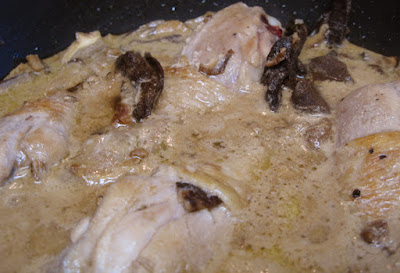Quite a few very traditional French dishes actually go well with rice, and Blanquette de Veau is one of them.
I always thought that rice is very Asian, and in Camille's classic French cookbook, she has recommended rice as the accompanying side dish for several recipes, which left me wondering. It's quite common for Rémi's family to serve rice, but I have always assumed their family is the exception than the rule.
So, I learned that Carmargue in Southern France is actually a rice-producing region. This place is famous for pink flamingos, which incidentally can't read signs telling them to keep off crops and thereby a headache to the French rice growers (there's this interesting book History of Food that gives a fascinating history of rice, among others, google to read extracts of the book).
How do French cook rice? From what I heard, I'm afraid their version of boiled rice is incomparable to that churned by any Asian rice cooker. That they cook rice like pasta, boiling them in water, and straining them.
So, I'll rather serve my delicious veal with Thai rice, cooked with my trusty rice cooker. The white sauce goes very well with rice.
Veal in white sauce (Blanquette de veau)
Serves two
250g veal (meat of young calves)
1 big carrot
1 onion
1 leek (I substituted with asparagus, probably not a good idea, but it's not every week that I have leek in stock)
1 onion
2 sprigs of parsley, 1 sprig of thyme and 1 bay leaf
1 clove
For white sauce:
15g butter
15g flour
1 egg yolk
125ml fresh cream
1/2 lemon
salt and pepper
Stick the clove into the onion. Put vegetables, veal, herbs, salt and pepper into a pan and cover with water. Bring to boil and simmer for about 2 hours. Remove the white froth forming at the surface.
Before serving, melt butter and mix in the flour and 3 big scoops of the vegetable broth. Beat the egg yolk, fresh cream, lemon juice together and stir into the butter and flour mixture. Add in more vegetable broth if necessary. Season with salt and pepper.
To serve, put veal and vegetables on serving plate and pour white sauce over. Serve with rice.
The vegetable broth is very rich and tasty too, I'm currently freezing it as vegetable stock. Not sure how I can use it yet, but it's going to be an experiment.
















